
As a three-year-old, I never lacked at finding something mischievous to do. For some reason, amusing toddler toys didn’t quite hold my attention.
One afternoon, I was sitting on the floor of our great room, stacking some large wooden blocks when I noticed my daddy pull out a little paring knife with a white handle from the drawer. He peeled and sliced an apple, then he washed and returned the knife to its original location. As the drawer clicked shut, my tiny ears pricked to attention. Daddy walked into the other room, and, quickly, I jumped to my feet. Pulling a stool under the counter toward the destination drawer on the south side of the island, I climbed atop my facilitating stool and pulled on the handle to reveal a treasure trove of knives—all shapes, all sizes.
Looking beyond the chef knife, the cleaver, even the serrated bread knife, my eyes fixated on that inexpensive, white-handled paring knife that I had watched Daddy use. Grasping the blade’s handle with my right hand, carefully, I climbed back down the stool. Once more, I looked at the knife in my hand, my Excaliber that I had pulled with ease from the treacherous knife drawer. I sat down on the top step of the basement staircase, hanging my little legs over the edge. My grin drew to a full smile as the sunlight from the door’s window made the silvery metal glisten.
Slipping my bottom from tread to tread, thumping as I went down, I headed into the basement. The knife waved in the air and occasionally knocked against walls as I slid down the remaining stairs to the floor. I landed with a thud, and the knife flew out of my hand and landed near the leg of the wool plaid upholstered armchair. As I took up the knife again in my right hand and glanced back and forth between the chair and the white-handled paring knife, my mind asked, What did Daddy do with this knife?
Suddenly, an ingenious idea flashed into my head.
So, I jabbed the blade of the knife straight into the taut fabric on the chair back. The sharp blade sliced through the fibers as easily as Daddy had peeled the apple. Giggling, I pulled out the knife and looked at the metal with satisfaction. I lifted myself to my little feet, smiled, and plunged the knife into the front cushion, ripping it toward me with all my energy. I gasped aloud gleefully as the contained stuffing burst out of the hole like popcorn. To my astonishment, the bigger the hole I made, the more the stuffing flew out. I dropped the knife and wiggled my finger into the center of the soft fluff. An enormous smile spread across my face.
Then Daddy’s nearby voice surprised me into freezing where I sat playing in the billow fluff on the family room rug. His wide eyes peered over the chair and down at me. His face grew paler. His chest began to heave, and his lips quivered. I looked up, and my smile dropped.
“Sorry, Daddy,” I repented, poking out my bottom lip like my older brother had taught me to do whenever he got in trouble.
“Me, too,” he answered with quiet distress in his voice.
I looked at the down stuffing, the distinct rip, and the abandoned blade. I returned my eyes to Daddy’s face and boldly declared, “Tayne did it.”
Unfortunately, Tayne didn’t do it, we had to reupholster the chair, and Daddy banned me from using knives for a few years without assistance—even butter knives.
Although I didn’t begin using knives how they were meant to be handled or at a very proper age, that event kickstarted an appreciation and fascination for knives.
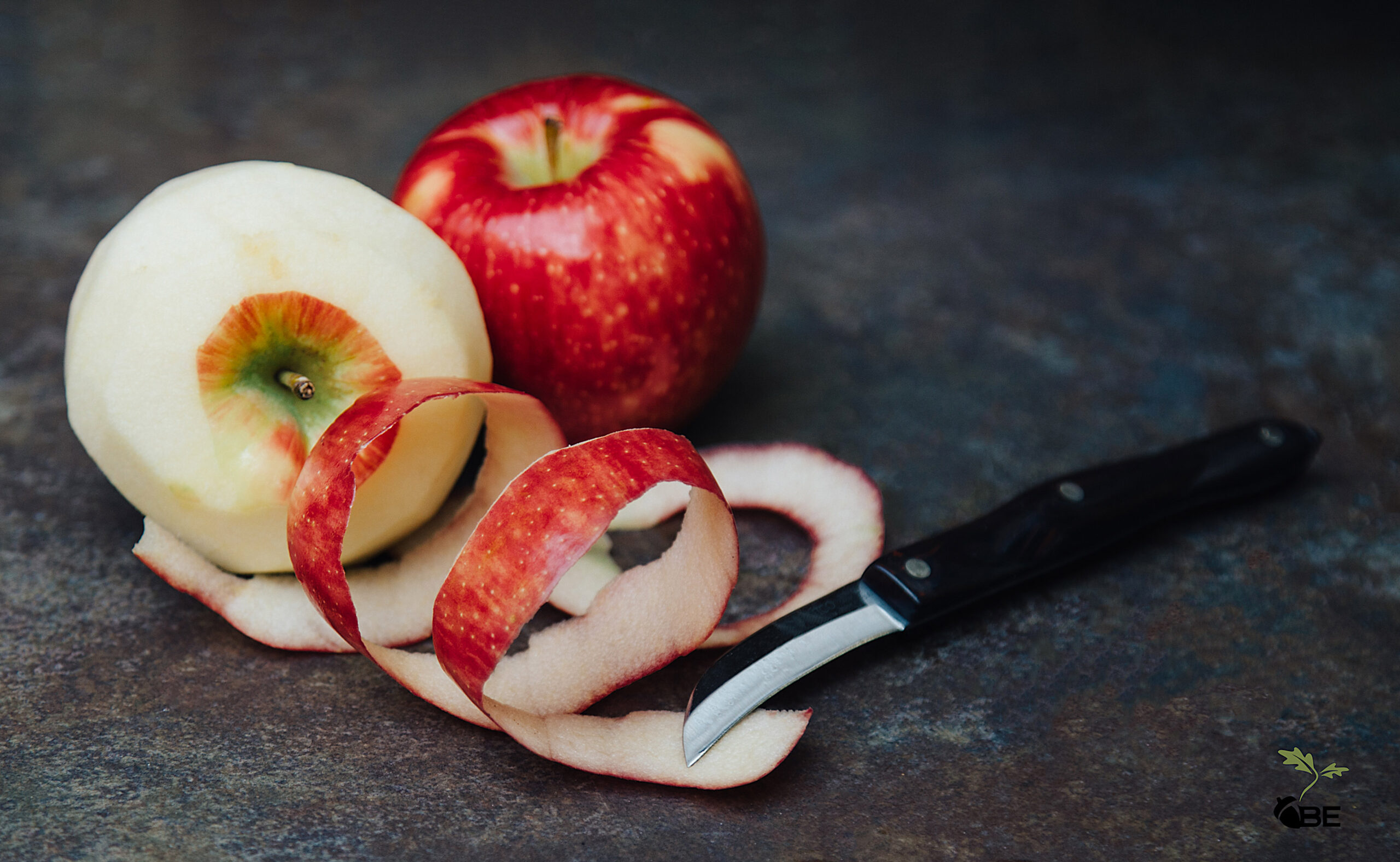
The History of Knives
Knives are one of the most well-known kitchen tools. However, these amazing implements, which we probably take for granted, weren’t always the sleek and comfortable design we use customarily.
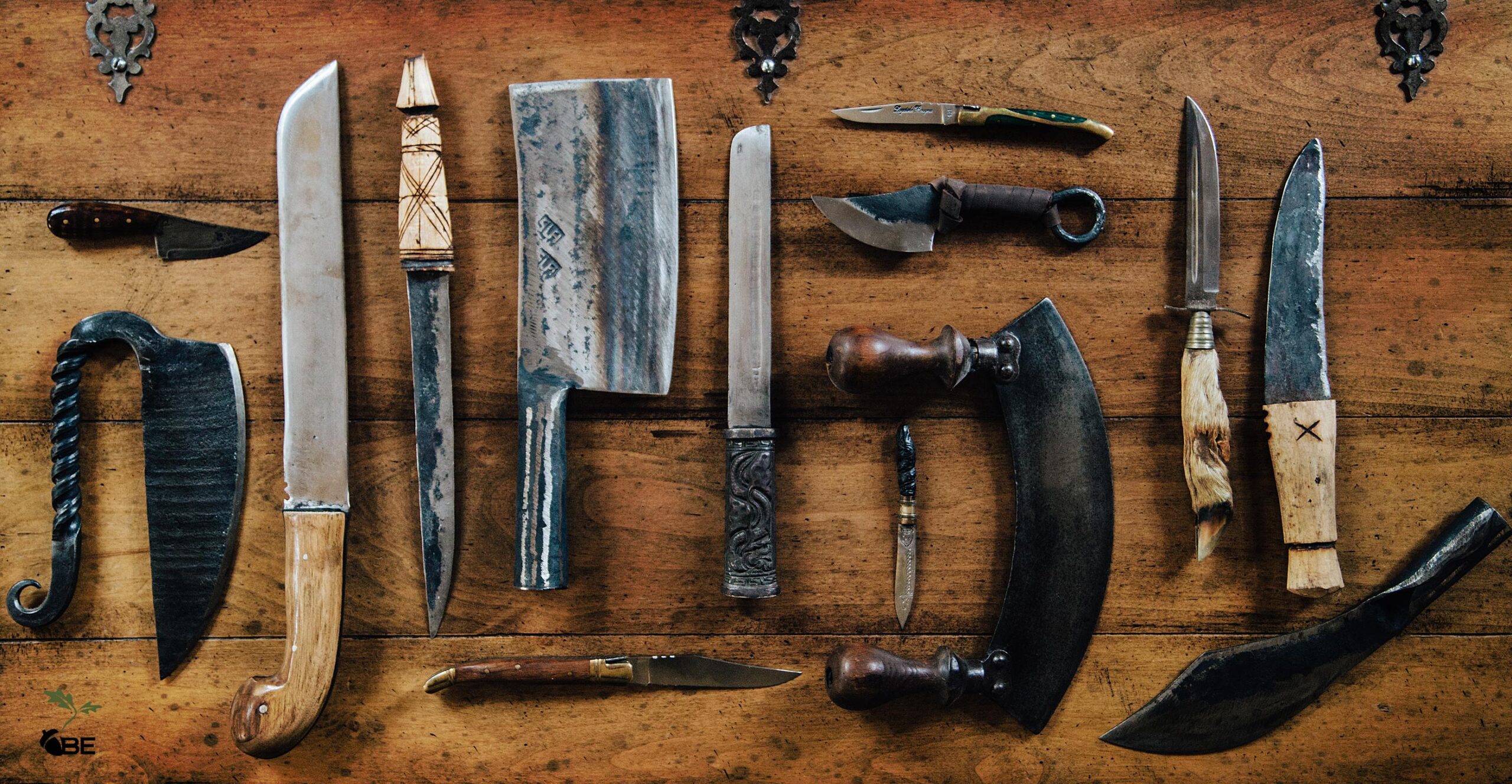
It’s difficult to imagine the sharp edge of flintstone being of much help in the process of butchering meat, yet that is where knives began. The discovery of fire, copper, and bronze opened the door for people to form sharp-edged tools. No doubt, these contrived implements served as a mere upgrade from their stone predecessors and still didn’t compare to what we enjoy today. Centuries passed, giving us iron and finally steel. After hours of heating, cooling, and hammering the steel to create the appropriate tenacity and thickness, these hand-forged knives and swords improved in appearance, design, performance, and endurance. From butter-knife table utensils to hefty butcher knives, our time in history possesses knives of all shapes and sizes and from all producers and places.
The Importance of Knives
“A kitchen without a knife is not a kitchen.”
– Masaharu Morimoto
What an inspired comment by a celebrated master Iron Chef. In summation, a chef is nothing without his best tools. Consequently, I feel justified in saying that a knife is at the very top of that list.

Whether at home or in a commercial setting, knives facilitate preparing food in the kitchen daily. While people might know that the basic use of a knife is to pick it up and cut with it, the complexity and real understanding of knives and their purpose actually go much deeper. Yes, at first glance, a knife is nothing more than a sharp tool used to cut, chop, and slice, rationalizing that bigger knives do the work faster. Yet, in reality, and especially in the professional kitchen, knives and how they are used can make all the difference in a truly beautiful dish.
The Right Knife for the Right Purpose
Generally, each knife has a name and a unique purpose.
In culinary school, my professors’ first requirement was to purchase a set of quality knives that I would use throughout my training. The knife list consisted simply of three basic implements: a chef knife, a boning knife, and a paring knife. Needless to say, I was thrilled to get to choose my set but unprepared for what I would find in selecting them. At the time, I didn’t realize the numerous styles of knives available. Each knife’s intended purpose, ergonomically fashioned handle for comfort, and reliability as a brand fascinated and overwhelmed me.
With the numerous brands, styles, and uses, why didn’t the culinary professors require a greater variety or name a specific brand that scored better? What knife set would serve me best as a chef or a home cook?

Quickly, I learned that the three required knives are the only ones a chef truly NEEDS. The other styles are fun and do serve specific purposes; however, those three blades are what really cut it in the kitchen.
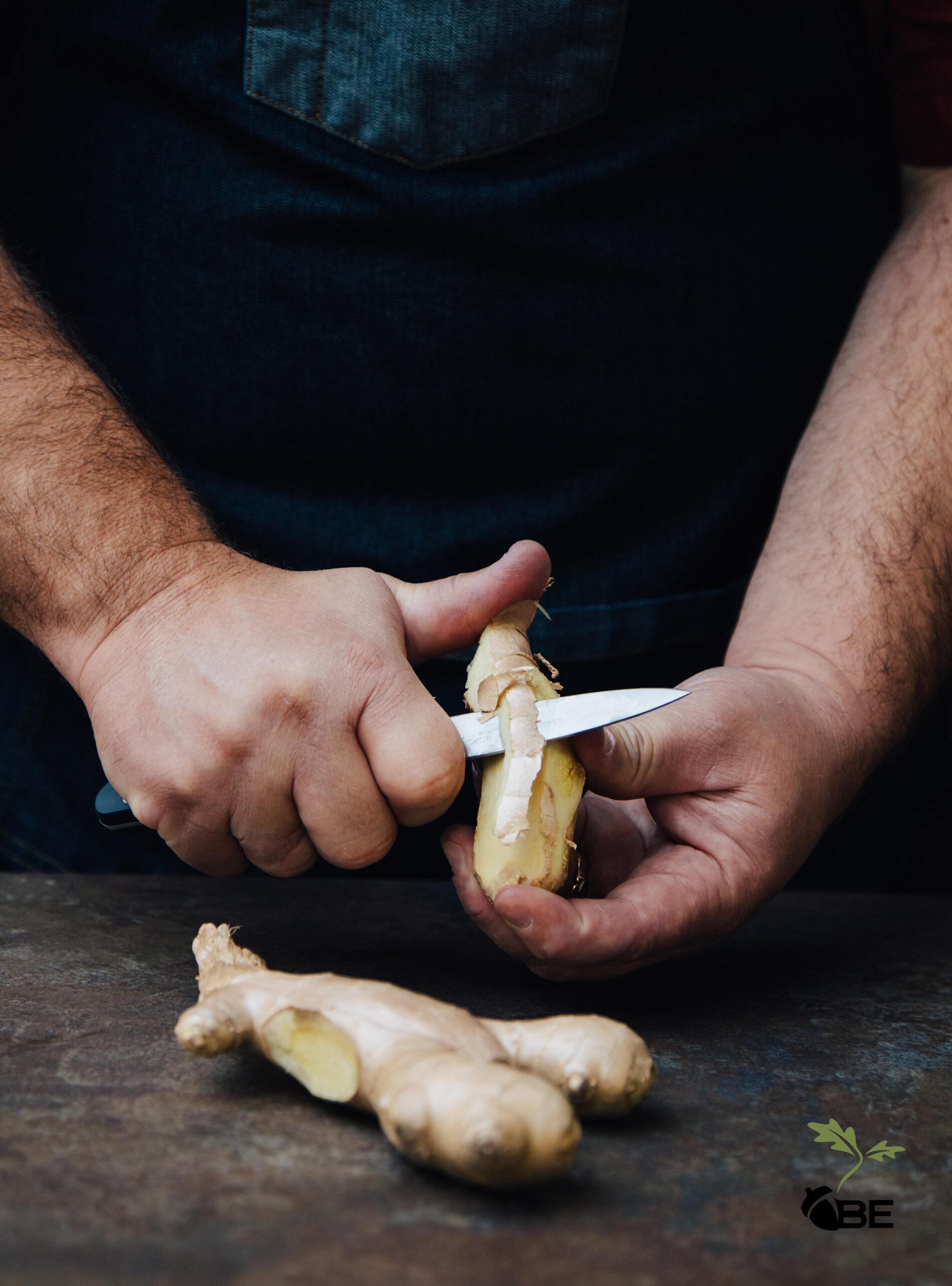
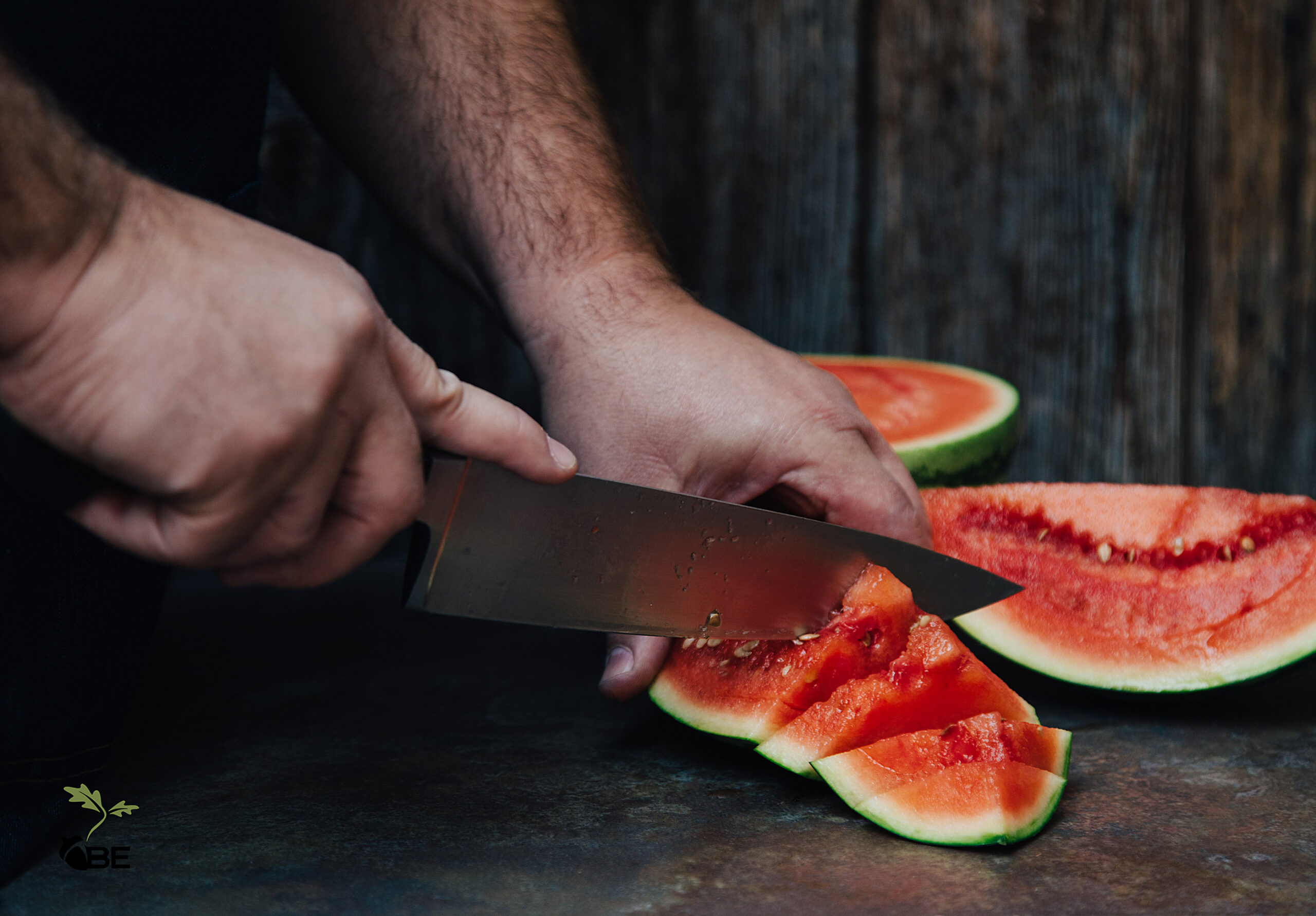
The Proper Use of Knives
After purchasing my knives, I wasted no time in using them with the caveat of learning the basics of knife skills and safety. I began with dices of all sizes, mince, julienne, chiffonade, tourné, and many more. The French names of the cuts make them seem complicated, but the techniques are simple and often used without knowledge of the skill. There are many ways to study and understand the various cuts. Yet, while I want you to understand the techniques, my purpose in writing is for you to understand the beauty that knives and the techniques used in combination with them create. Suffice it to say, knowing how to handle a knife to make the proper cuts correctly elevates a dish from mundane to magnificent.

We, as humans, eat first and foremost with our eyes. Think about the case of pastries at a bakery, the baskets of baguettes at a bistro, the “wow” effect of a dinner finely plated set in front of you at a restaurant. The presentation excites us before the food reaches our salivating mouths. Colorful, carefully designed plates of food that look delicious persuade us to believe the dish or dessert will taste good. Similarly, colorless and improperly plated food will quickly offend our appetites, even if it is the most delicious combination of food on the planet. Yes, it seems silly that just the look of food can force our minds to like or dislike it, but attractive food influences our taste buds.
The cuts, chops, and slices we choose to use will often provide a change in perspective and presentation about the food we consume. Thus, learning knife skills will provide better-looking food. The process comes full circle.
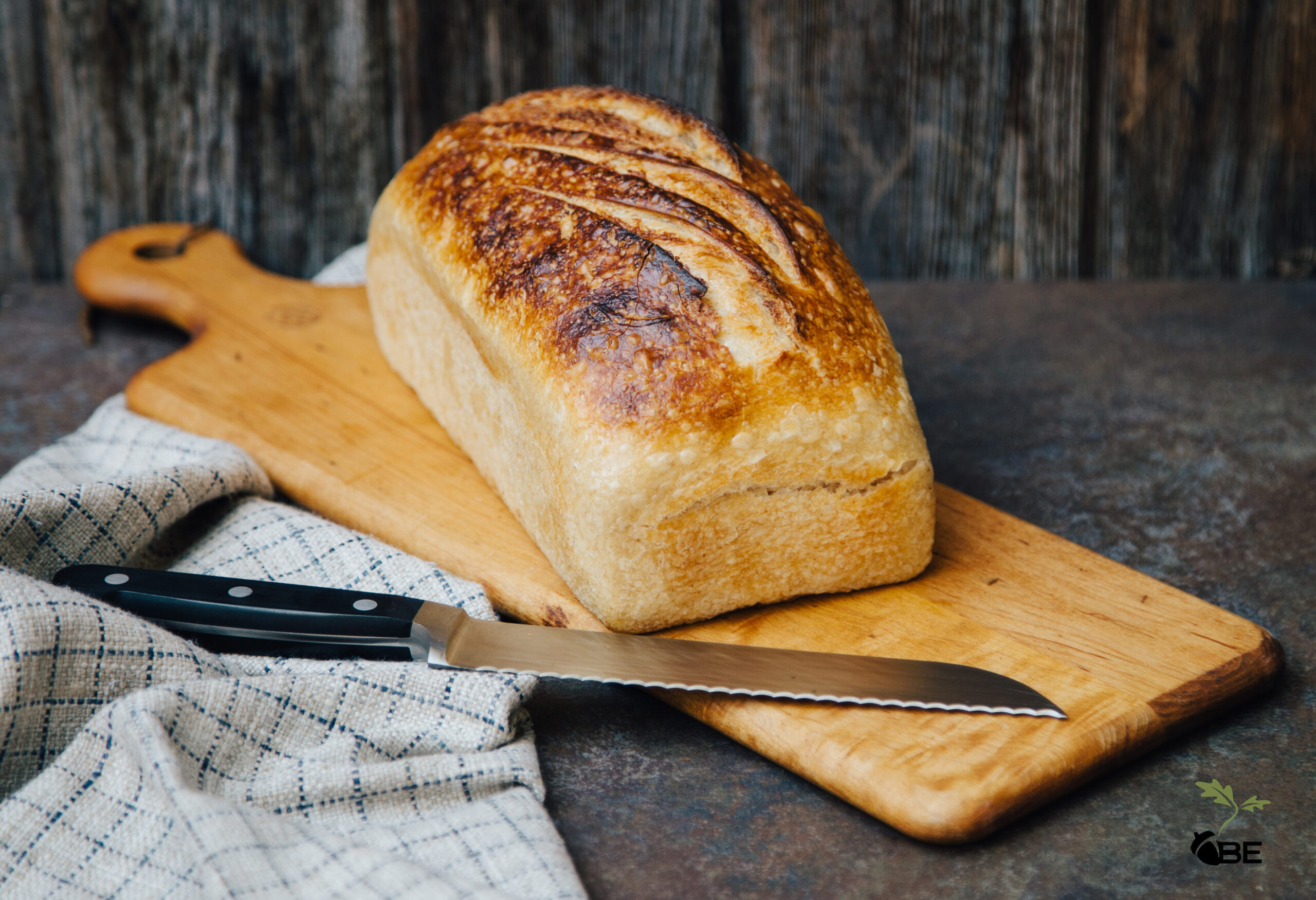
So, is it really that easy? Yes! Good food begins with the best ingredients, cooking techniques, and presentation. But none of that can happen without a knife used properly.
Looking at Knives Differently
I am so grateful for the invention and evolution of knives. I have come a long way from that day of innocently stabbing a chair to knowing how to properly use a knife and the techniques to create elegant and appetizing dishes.
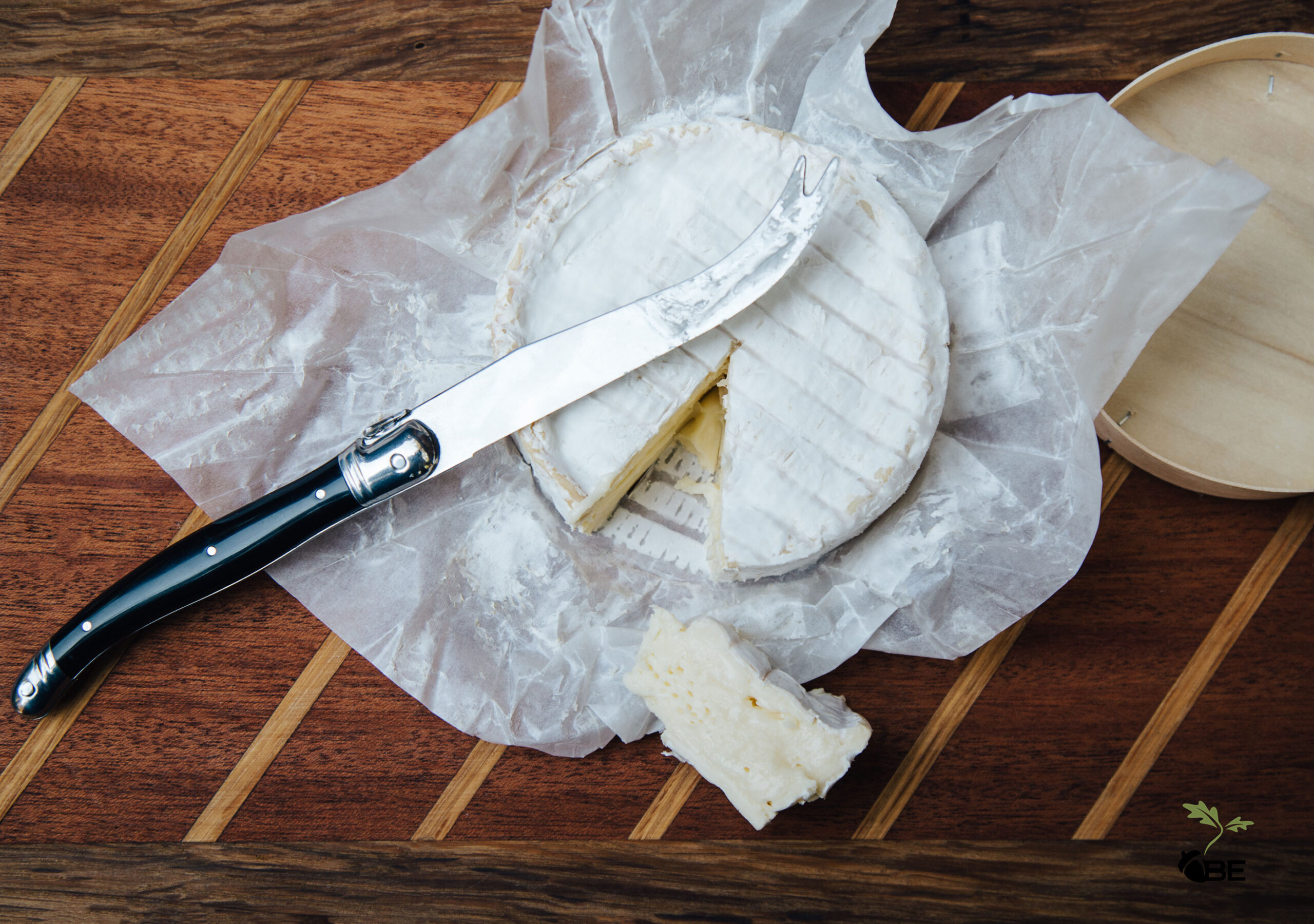
If you want to create beautiful food that will impress with both look and taste, the best advice I, as a trained chef, can give you is to make a quality knife your new best friend. Use it to create the culinary masterpieces you desire.
Oh, one more thought: maybe keep knives away from tiny, mischievous fingers.
By Brontë E. Mock
Stylized by R. Shannon Mock

©Be the Beautiful Life All Rights Reserved

